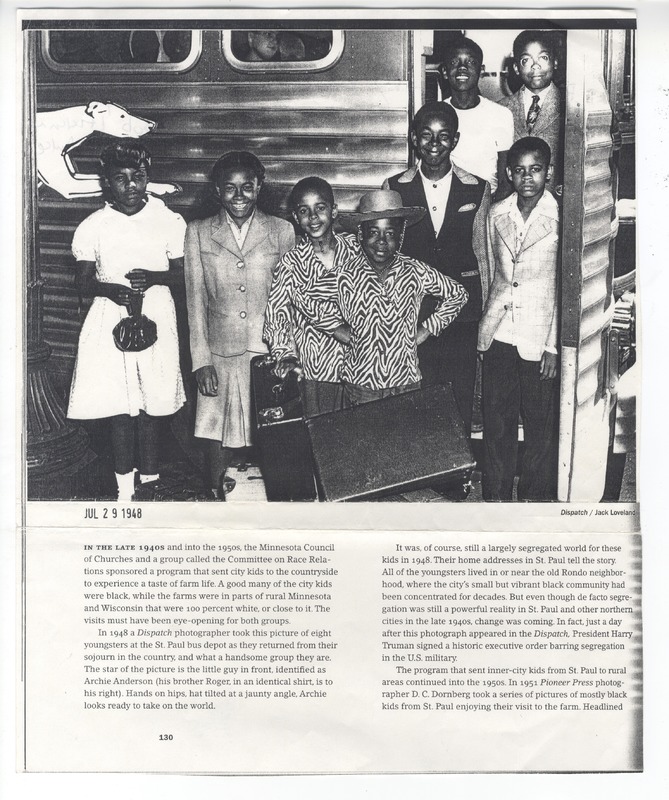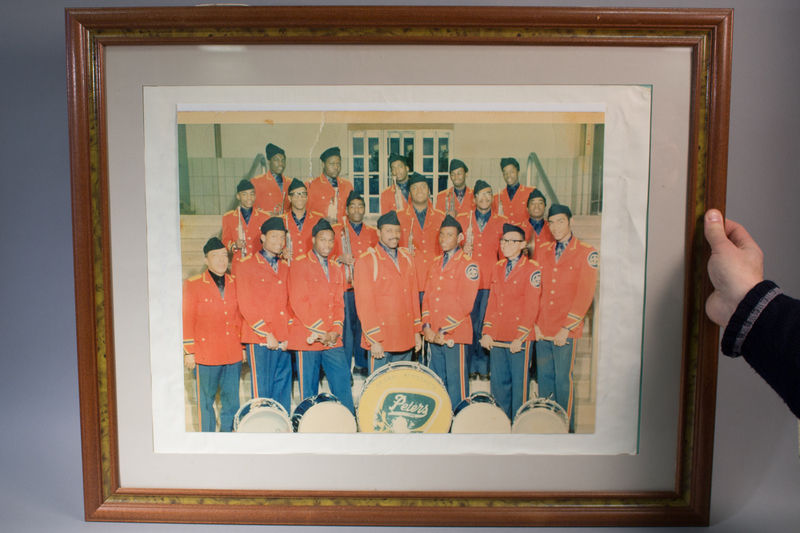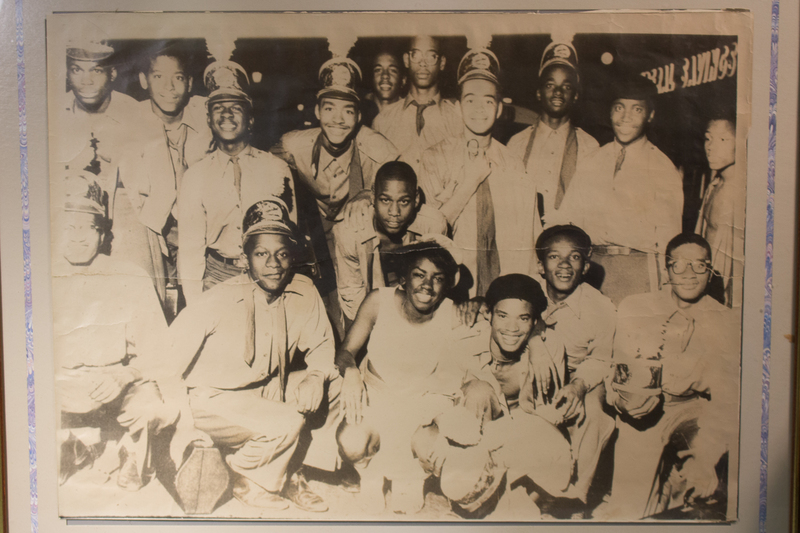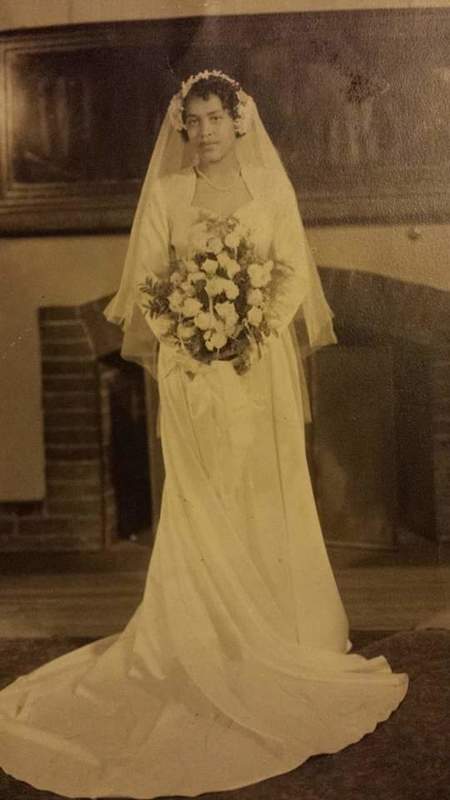Social Institutions
This section of the exhibit displays artifacts pertaining to more general social institutions of Rondo. Examples of these social institutions include political organizations, social clubs, churches, unions, and community centers. Not only did these social institutions serve a wide array of functions in the neighborhood, but they also indicate the overall strength and vitality of the Rondo neighborhood. Many sources about Rondo and those who have spoken on Rondo’s history often mention various social institutions in the neighborhood as being formative during residents’ childhoods and remaining important throughout residents’ entire lives. Rondo’s social institutions served as safe gathering spaces that performed a variety of cultural, social, and economic functions, as is reflected in the variety of objects chosen to represent them. Furthermore, the presence of social institutions was essential for the Rondo neighborhood as a place of exchange and where connections could be forged and strengthened.
Several such examples can be found in sources about the Rondo neighborhood, such as Days of Rondo and Voices of Rondo. In Days of Rondo, Fairbanks highlights multiple local social institutions that were formative in her development and her personal experience of Rondo. Some of the social institutions that had a particular influence on Fairbanks were the Sanctified church, Taylor’s Musical Strings, and the Hallie Q. Brown Center. Fairbanks describes the different roles of these institutions: “the Hallie developed citizenship as it provided education, entertainment, and physical training, the churches developed a sense of spirituality, stewardship, and service.” (1) These institutions kept Fairbanks engaged productively and positively in the community throughout her childhood. Fairbanks’ participation in events and services offered at these various institutions also indicate that residents often attended several different institutions as each varied in the services they provided.
Debbie Montgomery, in Voices of Rondo, similarly describes the role of her church, St. Philip’s Episcopal Church, as a space of education and productive activity. Montgomery additionally describes the influence of the local youth branch of the NAACP. Montgomery herself was heavily involved in the political organization, but she claims that up to 650 youth from the neighborhood were involved. Both Fairbanks and Montgomery viewed, as many residents of Rondo did, these social institutions as multifaceted in use and essential in providing a safe space for children to learn, make connections with one another, and express themselves.
The importance of the theme of social institutions is clearly reflected in many of the objects from the 2016 History Harvest, and from this year’s harvest as well. Three items in particular exemplify the importance and variety of social institutions, which include churches, community centers, and clubs. The first object, titled “Rondo children visit a farm in Cherry Grove, MN”, is a 1948 newspaper clipping from the St. Paul Dispatch about a two-week church-sponsored trip to Cherry Grove, Minnesota, for eight of Saint Paul’s inner-city black youth. The text’s description of the Minnesota Council of Churches’ role echoes what both Montgomery and Fairbanks described in their respective accounts, in that churches often sponsored camps or trips outside the city for neighborhood youth. The church in this instance was not only sponsoring positive activity, but also providing an educational trip for Rondo youth by letting them experience country and farm life.
For the second object in the social institutions theme, the color photograph, contributed by Lester O. Myles, titled “Gopher Elks/Peter Meat’s Drumming Corps” is featured. This photo features a drum corps of young black men around 1960 in the gymnasium of the Downtown Civic Center. While there was a large variety of social clubs in the Rondo neighborhood, evidently some of the most important were those focused on the arts. These organizations were often well-known within the community too. The drum corps is also referenced in the Floyd George Smaller Jr. and Wilbert John Douglas Jr. interviews at the Minnesota Historical Society about Old Rondo.
This club not only generated productive and artistic activity, but it also served as a space where young black men in the neighborhood could gather and engage with one another in a positive setting. And finally, this object reflects not only the social aspect of these institutions, but their cultural importance as well as these institutions often facilitated artistic endeavors.
The last object that this section features is a black and white photograph of the Louie Heloise Tabor Neal wedding reception at the Sterling Club in 1944. The Sterling Club was founded in 1919, located at the corner of Dale and Rondo streets, and was a prominent black men’s club in the neighborhood that also functioned as a civic and charitable organization. This object embraces not only the theme of social institutions, as it was held at the Sterling Club, but also connects to the themes of family and women in Rondo, the other sections of this exhibit. In addition, like many of the other institutions of Rondo, the Sterling Club clearly was a space that could serve multiple functions and provide services for all residents of the community. This photo furthermore demonstrates the importance of various social institutions in Rondo as gathering spaces for residents and their family, not only as functional spaces for important occasions but also bringing residents together to interact and exchange.
Old Rondo was a self-sustaining and flourishing black community whose backbone was its social institutions. The various social institutions of Rondo, of which there were many, provided Rondo residents with the necessary spaces needed in a community. All of the social institutions, at their most basic level, provided safe spaces for the gathering of residents. Additionally, these spaces could perform a variety of services and host different activities, and were generally not limited to a single function. This is reflected in the three objects featured in this section. At a broader level, Rondo’s social institutions provided a space that could simultaneously provide education for those gathered there, whether in the form of Sunday school, the arts, or skills, and a space in which residents could connect and exchange. Being raised in Rondo meant one grew and developed immersed in these social institutions.
(1) "Debbie Montgomery." Cavett, Kate. Voices of Rondo: Oral Histories of Saint Paul's Historic Black Community. Hand in Hand Productions (Saint Paul, Minn.), and Rondo Oral History Project. Minneapolis: Syren Book Co, 2005.



